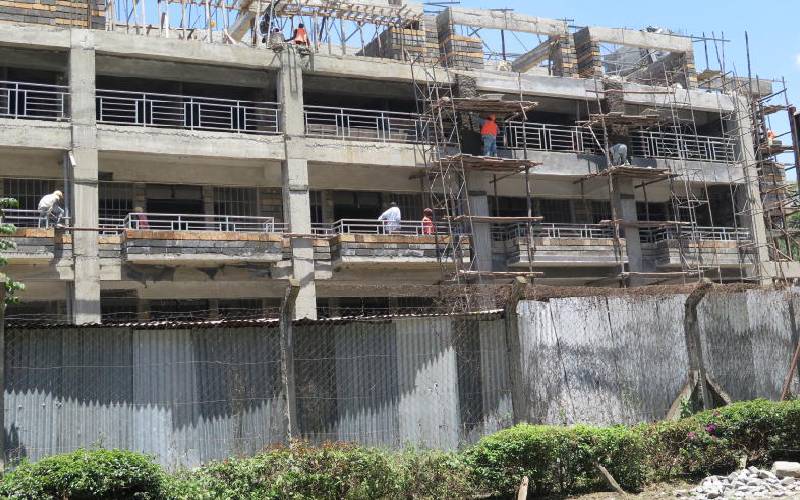 Real estate returns have dwindled in the last couple of years. Novice pundits have casually attributed this solely to the vagaries of our economy, some say it is the birth pains to a bubble. I disagree to a large extent. Our erratic economy isn’t bespoke to us, the global economy, for varied reasons, is too facing unprecedented times.
Real estate returns have dwindled in the last couple of years. Novice pundits have casually attributed this solely to the vagaries of our economy, some say it is the birth pains to a bubble. I disagree to a large extent. Our erratic economy isn’t bespoke to us, the global economy, for varied reasons, is too facing unprecedented times.
What is unique to us is that the construction and real estate industry continue to face challenges that are partly our own creation. Amid the 21st century global challenges, our construction methods, as Sherlock would say, remain elementary. How do we expect high real estate margins when we are stuck to medieval construction ways that have normalised time and cost overruns on nearly every project? It’s time we tried new construction methods. Lean construction? Definitely.
Simply put, lean construction is a way of designing the construction processes to improve quality and efficiency by focusing on the maximum utilisation of material and labour through the elimination of waste and non-value adding activities. It focuses on delivering the project on time and within budget to optimise customer satisfaction and margin potential. There is no one cookie-cutter approach to lean construction. Different tools are used world-wide such as integrated project delivery (IPD), building information modelling, 5s principles, last planner principles. The 5s principles is an amazing lean achieving tool (I am hoping to discuss in future) however, my preference remains IPD.
IPD is a model for delivering construction projects using single contracts for design and construction with a shared risks/reward model. The single agreement ties together the project delivery teams differently than traditional design/bid/build. That is the consultant, the contractor, and the owner sign a single contract. The contract lays out the responsibilities of the consultant, contractor, and owner but also makes it clear that successful delivery of the project is the responsibility of all three. The contract is always signed by the owner, project manager/lead designer, and main contractor. Some owners choose to have more than three signatories in the agreement, bringing in other project consultants and subcontractors as primary signatories. If the other parties are not signatories, they are typically subcontracted under one of the primary signatories. I honestly don’t have to restate that nearly all of our construction projects failure issues in this country are by design; there is always a deliberate tireless effort to subvert the planned course.
Project consultants whose professional fees are calculated based on a project contract sum are always reluctant to ensure that variations which increase project budgets are eliminated if not minimised. And why should they yet it means more money in their baskets?
We must renounce our obstinacy and adopt modern ways of construction. I am inclined to this lean construction model as a sure way of addressing our bedevilling project failure issues in this country. The single contract lays out the terms by which the risk/reward parties can lose some or all of their profit if the project does not meet its budget and schedule goals. It, therefore, gives the owner, consultants and contractor an impetus to deliver a project within time, cost and quality in order to get their rewards. Everyone has something to lose should a project fail. This contrary to the traditional way wherein fact some parties like a contractor and even consultants normally prefer the project to run into variations. The only loser is the owner.
In a country with an accumulated housing deficit of nearly two million and annual housing deficit, there is still a housing niche to be realised. But we must be ingenious with our construction ways to achieve this. The old tested ways are no longer the best.
- The writer is chairman of Association of Construction Managers of Kenya. [email protected]
 The Standard Group Plc is a
multi-media organization with investments in media platforms spanning newspaper
print operations, television, radio broadcasting, digital and online services. The
Standard Group is recognized as a leading multi-media house in Kenya with a key
influence in matters of national and international interest.
The Standard Group Plc is a
multi-media organization with investments in media platforms spanning newspaper
print operations, television, radio broadcasting, digital and online services. The
Standard Group is recognized as a leading multi-media house in Kenya with a key
influence in matters of national and international interest.
 The Standard Group Plc is a
multi-media organization with investments in media platforms spanning newspaper
print operations, television, radio broadcasting, digital and online services. The
Standard Group is recognized as a leading multi-media house in Kenya with a key
influence in matters of national and international interest.
The Standard Group Plc is a
multi-media organization with investments in media platforms spanning newspaper
print operations, television, radio broadcasting, digital and online services. The
Standard Group is recognized as a leading multi-media house in Kenya with a key
influence in matters of national and international interest.

 Real estate returns have dwindled in the last couple of years. Novice pundits have casually attributed this solely to the vagaries of our economy, some say it is the birth pains to a bubble. I disagree to a large extent. Our erratic economy isn’t bespoke to us, the global economy, for varied reasons, is too facing unprecedented times.
Real estate returns have dwindled in the last couple of years. Novice pundits have casually attributed this solely to the vagaries of our economy, some say it is the birth pains to a bubble. I disagree to a large extent. Our erratic economy isn’t bespoke to us, the global economy, for varied reasons, is too facing unprecedented times.




